Charles E W Bean, Diaries, AWM38 3DRL 606/251/1 - 1915 - 1936 - Part 17
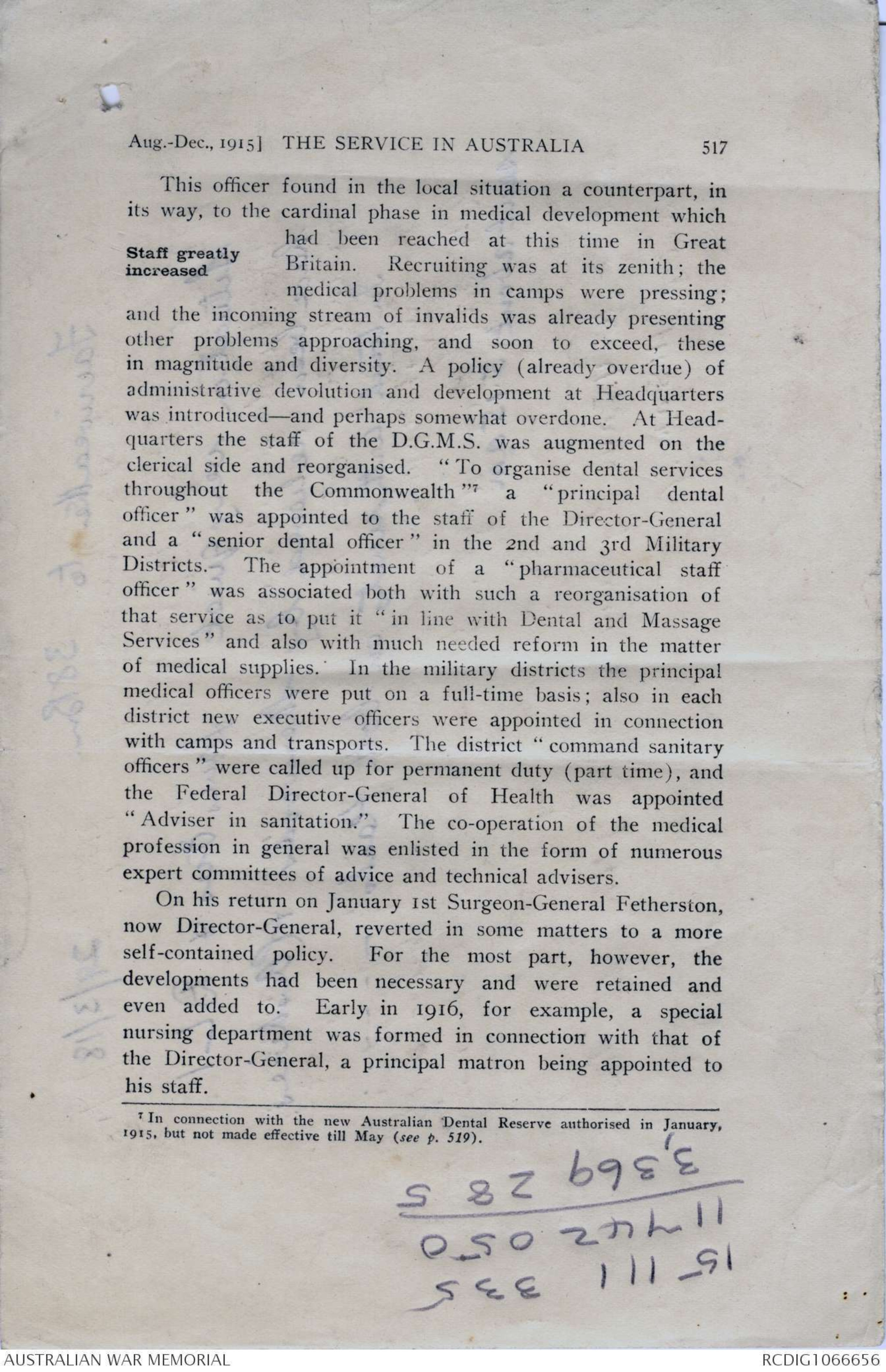
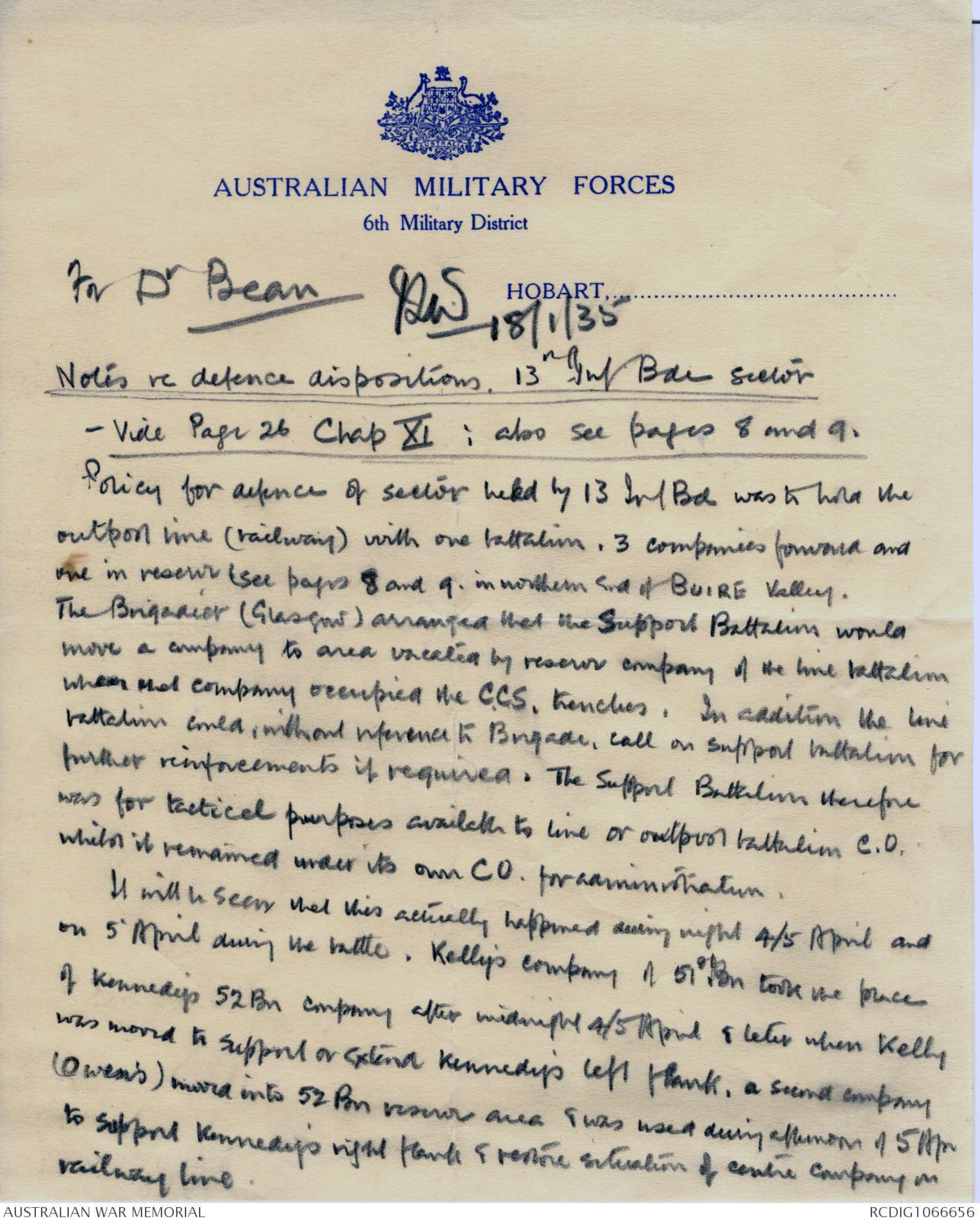
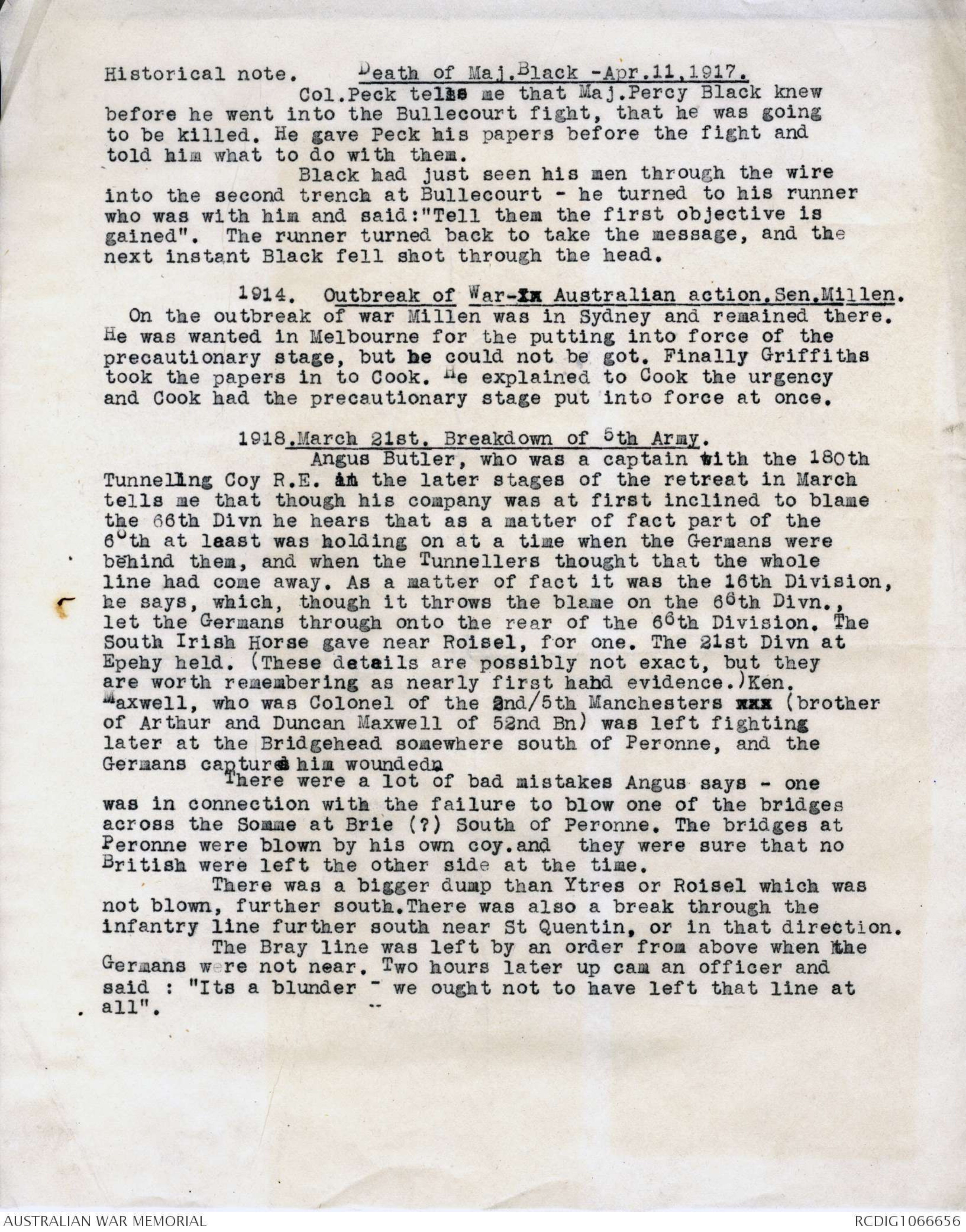
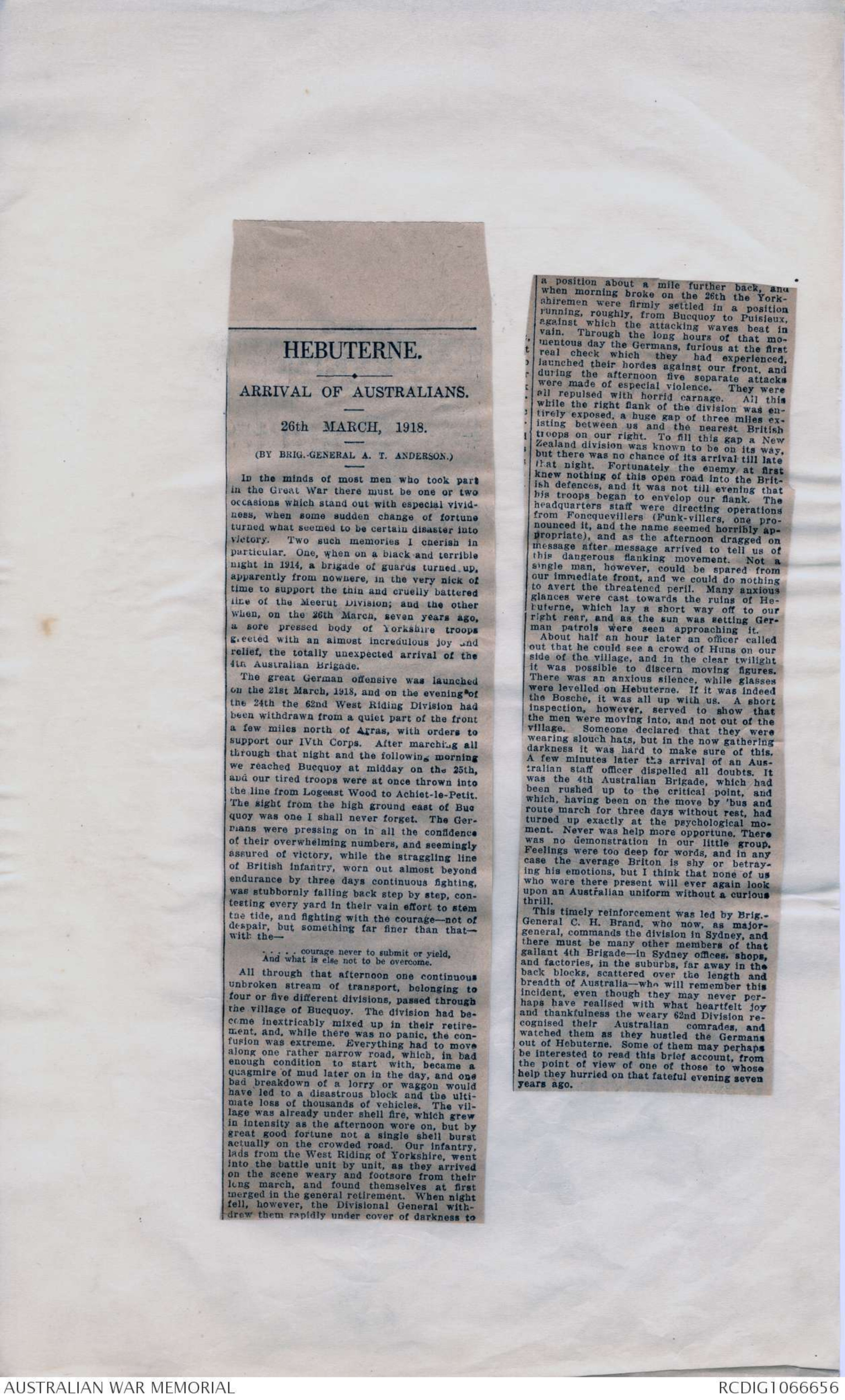

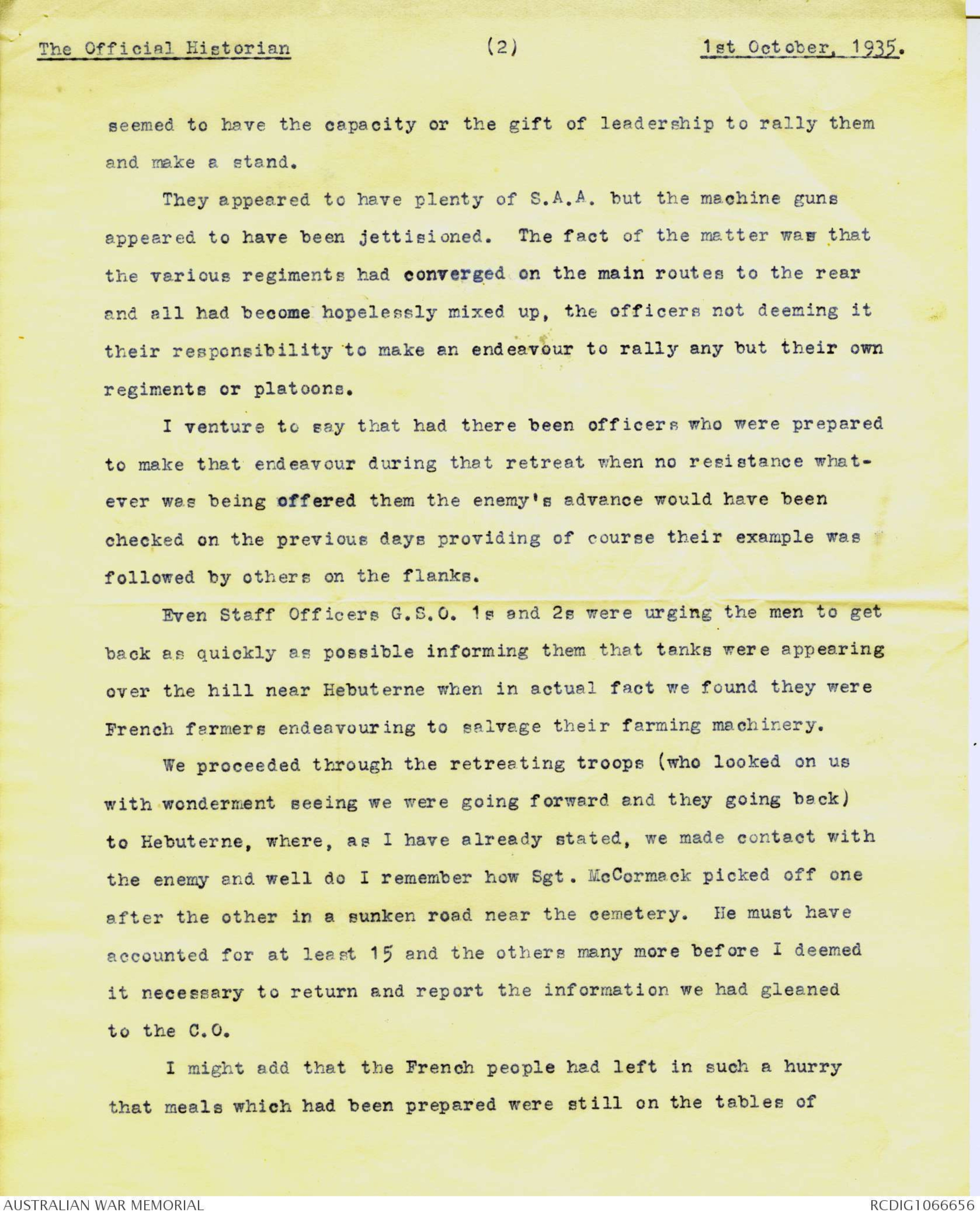
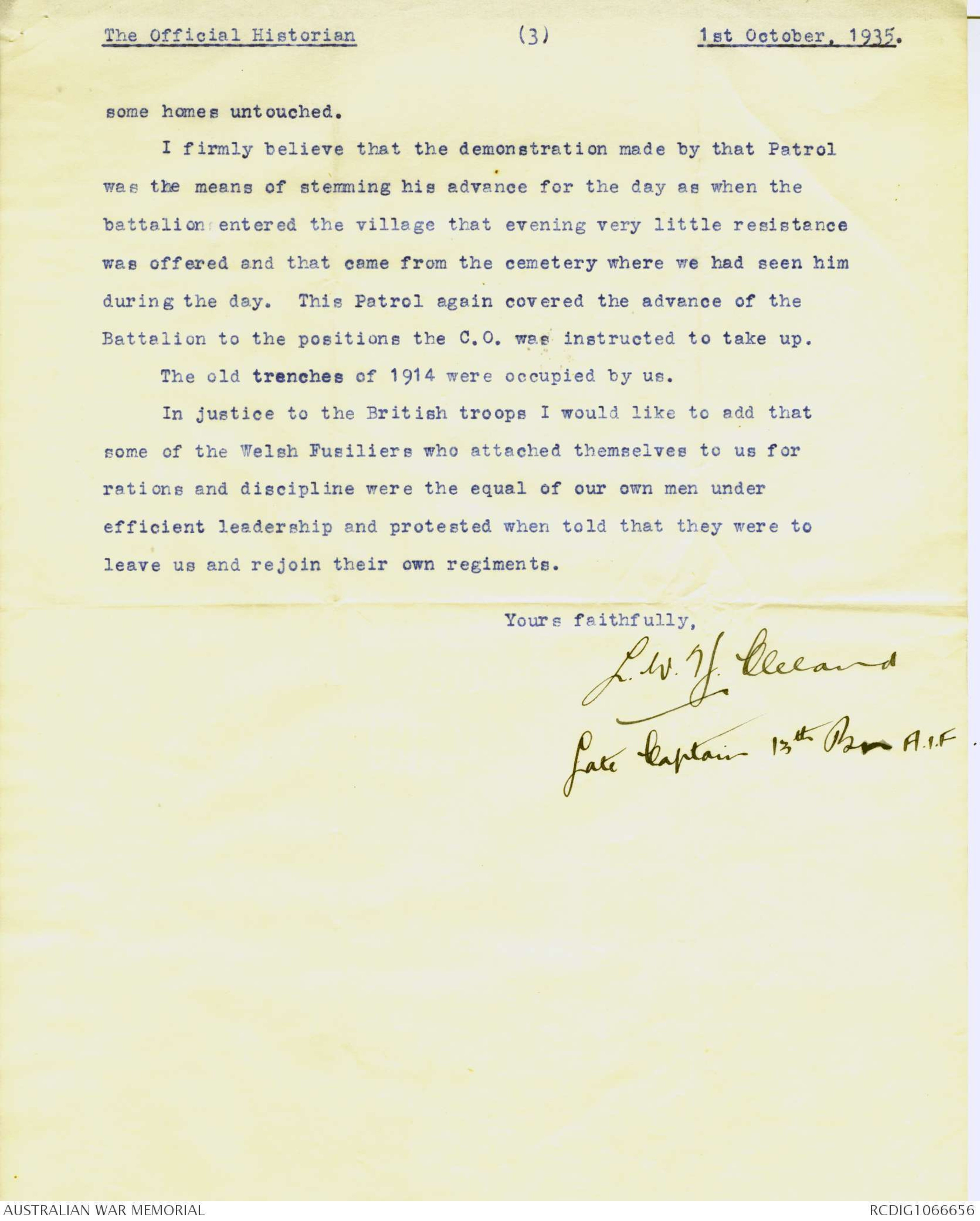
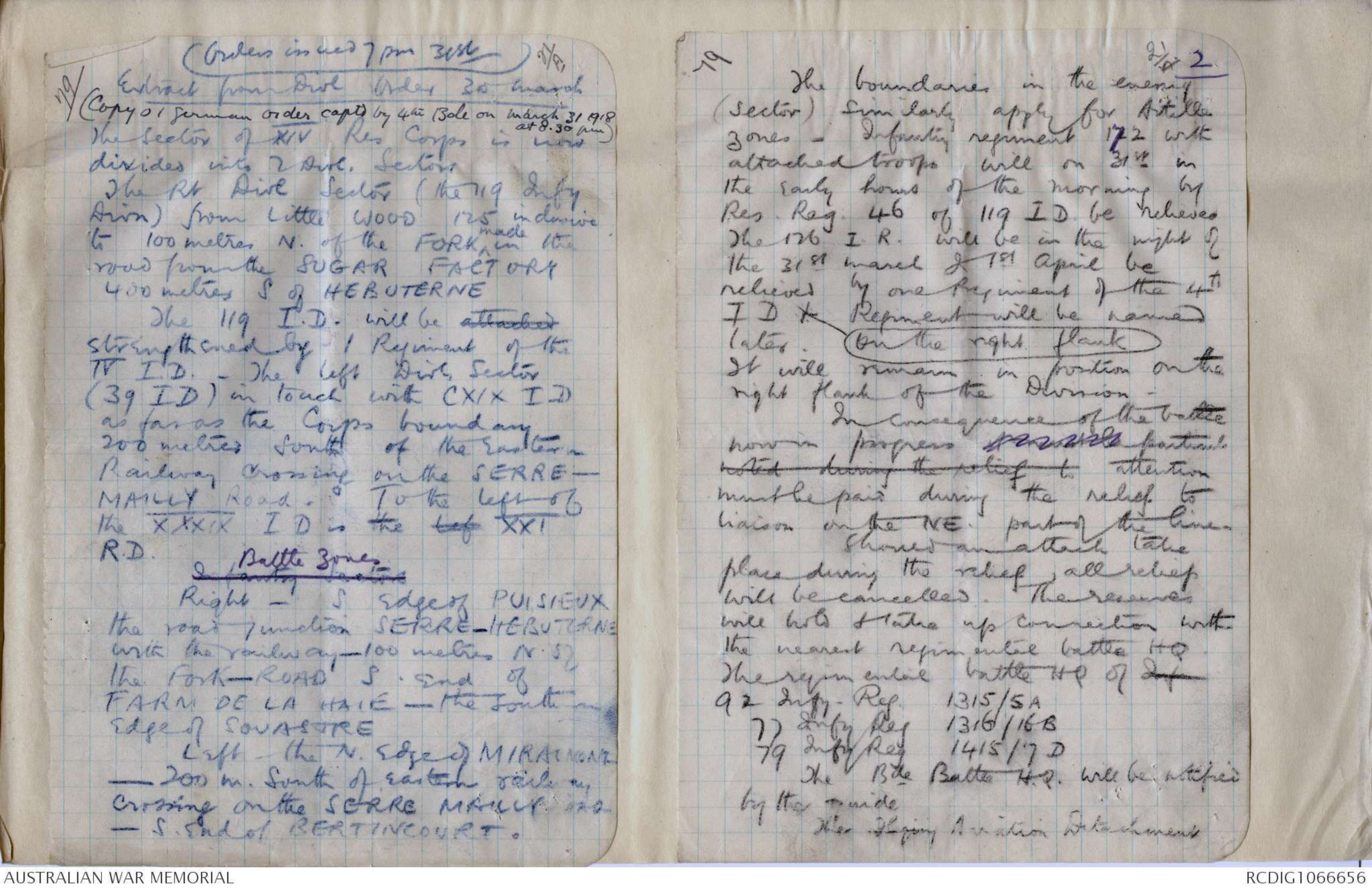
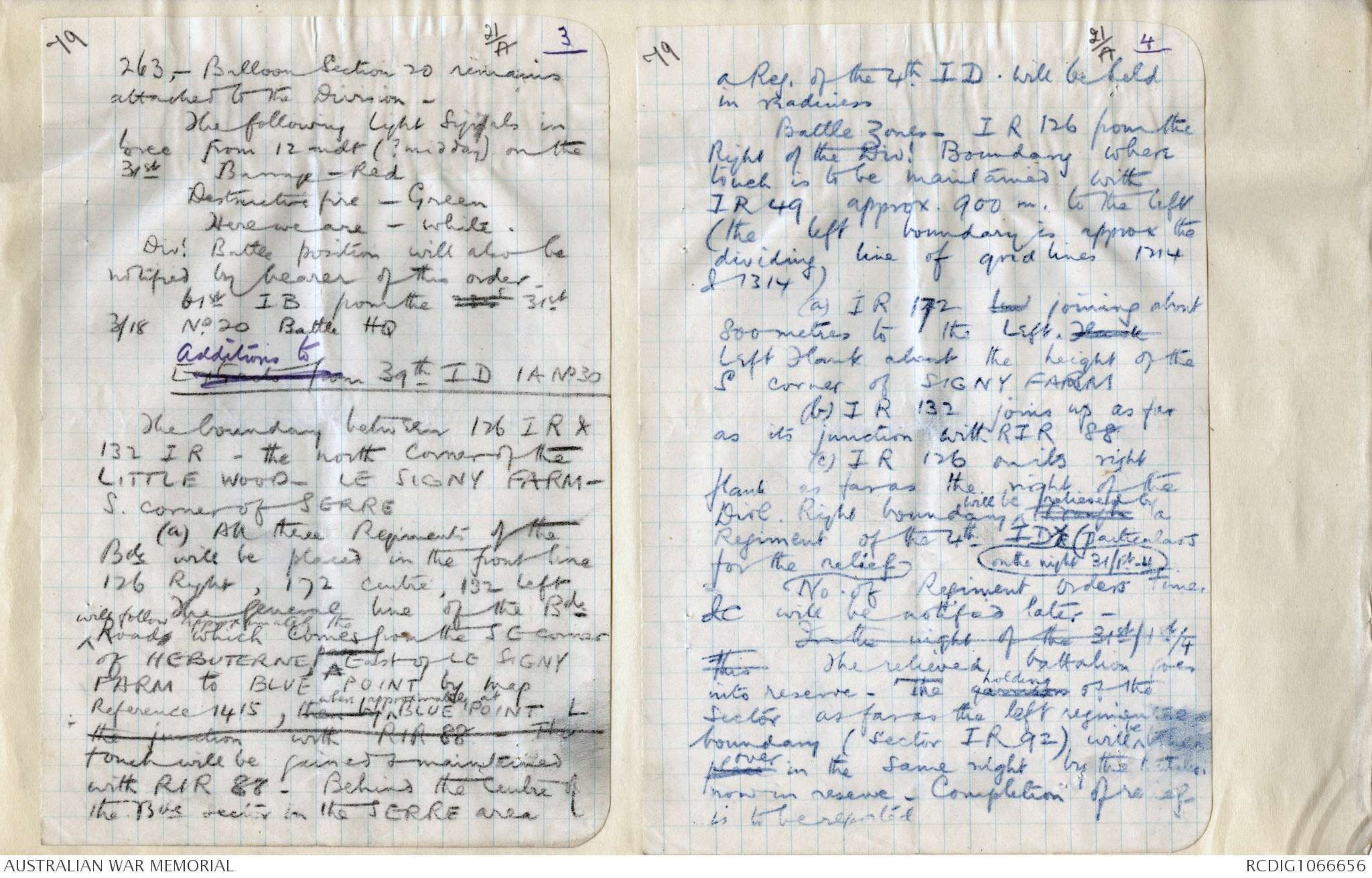
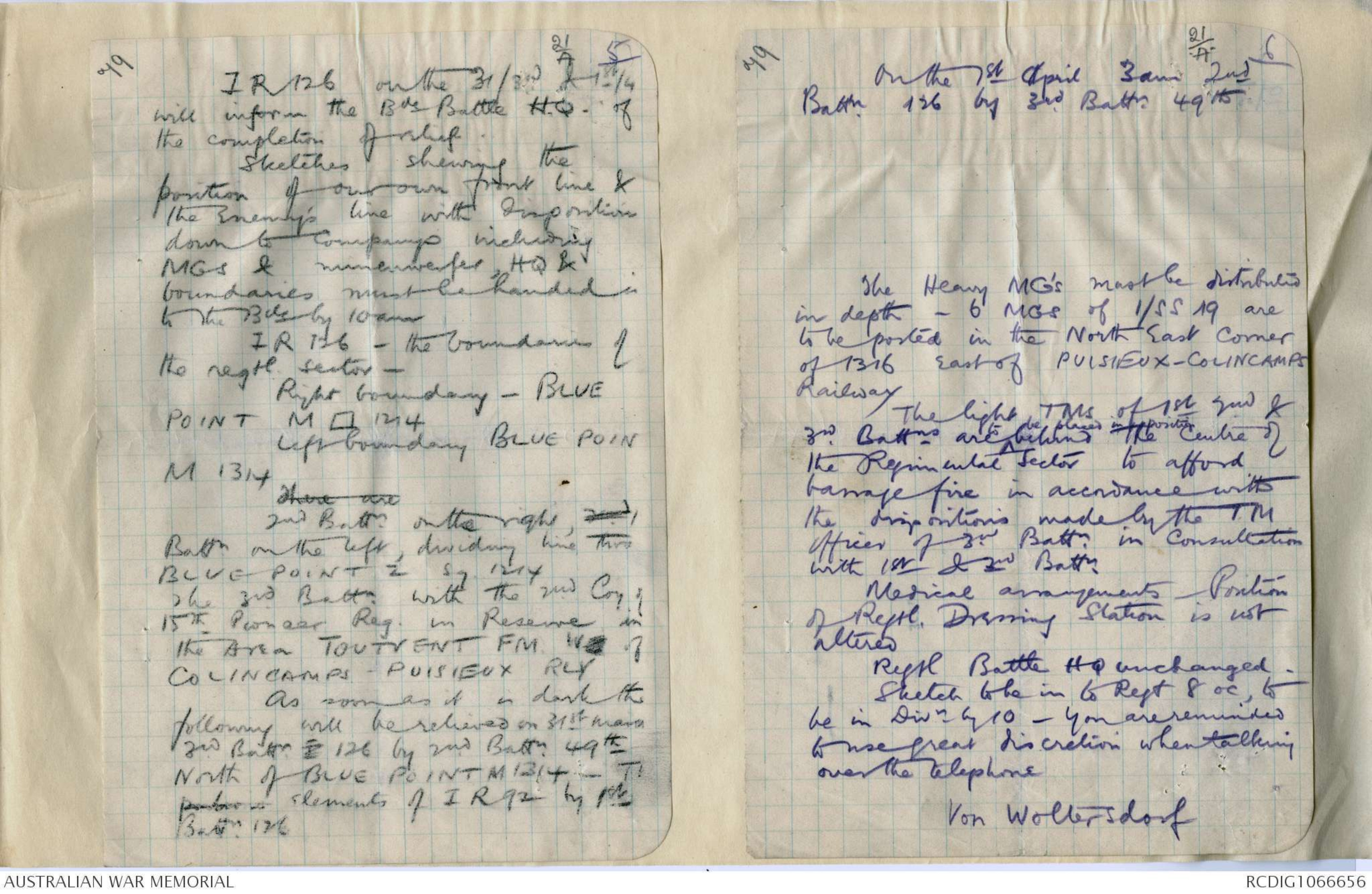
517
Aug. - Dec., 1915] THE SERVICE IN AUSTRALIA
This officer found in the local situation a counterpart, in
its way, to the cardinal phase in medical development which
had been reached at this time in Great
[*Staff greatly
increased*]
Britain. Recruiting was at its zenith; the
medical problems in camps were pressing;
and the incoming stream of invalids was already presenting
other problems approaching, and soon to exceed, these
in magnitude and diversity. A policy (already overdue) of
administrative devolution and development at Headquarters
was introduced—and perhaps somewhat overdone. At Headquarters
the staff of the D.G.M.S. was augmented on the
clerical side and reorganised. "To organise dental services
throughout the Commonwealth"7 a "principal dental
officer" was appointed to the staff of the Director-General
and a "senior dental officer" in the 2nd and 3rd Military
Districts. The appointment of a "pharmaceutical staff
officer" was associated both with such a reorganisation of
that service as to put it "in line with Dental and Massage
Services" and also with much needed reform in the matter
of medical supplies. In the military districts the principal
medical officers were put on a full-time basis; also in each
district new executive officers were appointed in connection
with camps and transports. The district "command sanitary
officers" were called up for permanent duty (part time), and
the Federal Director-General of Health was appointed
"Adviser in sanitation." The co-operation of the medical
profession in general was enlisted in the form of numerous
expert committees of advice and technical advisers.
On his return on January 1st Surgeon-General Fetherston,
now Director-General, reverted in some matters to a more
self-contained policy. For the most part, however, the
developments had been necessary and were retained and
even added to. Early in 1916, for example, a special
nursing department was formed in connection with that of
the Director-General, a principal matron being appointed to
his staff.
7In connection with the new Australian Dental Reserve authorised in January,
1915, but not made effective till May (see p. 519).
[*31/3/18*]
[*15 111 335
11742 050
3,369 28 5*]
AUSTRALIAN MILITARY FORCES
6th Military District
HOBART.......
For Dr Bean
DW 18/1/35
Notes re defence dispositions. 13th Inf. Bde sector
- Vide page 26 Chap XI: also see pages 8 and 9.
Policy for defence of Sector held by 13 Inf. Bd was to hold the
outpost line (railway) with one battalion, 3 companies forward and
one in reserve (see pages 8 and 9 in Northern end of BUIRE Valley.
The Brigadier (Glasgow) arranged that the Support Battalions would
move a company to area vacated by reserve company of the line battalion
when that company occupied the C.C.S trenches. In addition the line
battalion could, without reference to Brigade, call on support battalion for
further reinforcements if required. The Support Battalion therefore
was for tactical purposes available to line or outpost battalion C.O.
whilst it remained under its own C.O. for administration.
It will be seen that this actually happened during night 4/5 April and
on 5th April during the battle. Kelly's Company of 51st Bn took the place
of Kennedy's 52 Bn Company after midnight 4/5th April & later when Kelly
was moved to support or extend Kennedy's left flank, a second company
(Owen's) hurried into 52 Bn reserve area & it was used during afternoon of 5 Apr
to support Kennedy's right flank & restore situation of entire company on
railway line.
Historical note. Death of Maj. Black - Apr. 11. 1917.
Col. Peck tells me that Maj. Percy Black knew
before he went into the Bullecourt fight, that he was going
to be killed. He gave Peck his papers before the fight and
told him what to do with them.
Black had just seen his men through the wire
into the second trench at Bullecourt - he turned to his runner
who was with him and said: "Tell them the first objective is
gained". The runner turned back to take the message, and the
next instant Black fell shot through the head.
1914. Outbreak of War- In Australian action, Sen.Millen.
On the outbreak of war Millen was in Sydney and remained there.
He was wanted in Melbourne for the putting into force of the
precautionary stage, but he could not be got. Finally Griffiths
took the papers in to Cook. He explained to Cook the urgency
and Cook had the precautionary stage put into force at once.
1918. March 21st. Breakdown of 5th Army.
Angus Butler, who was a captain with the 180th
Tunnelling Coy R.E. in the later stages of the retreat in March
tells me that though his company was at first inclined to blame
the 66th Divn he hears that as a matter of fact part of the
66th at least was holding on at a time when the Germans were
behind them, and when the Tunnellers thought that the whole
line had come away. As a matter of fact it was the 16th Division
he says, which, though it throws the blame on the 66th Divn.,
let the Germans through onto the rear of the 66th Division. The
South Irish Horse gave near Roisel, for one. The 21st Divn at
Epehy held. (These details are possibly not exact, but they
are worth remembering as nearly first hand evidence.) Ken.
Maxwell, who was Colonel of the 2nd/5th Manchesters was (brother
of Arthur and Duncan Maxwell of 52nd Bn) was left fighting
later at the Bridgehead somewhere south of Peronne, and the
Germans captured him woundedn.
There were a lot of bad mistakes Angus says - one
was in connection with the failure to blow one of the bridges
across the Somme at Brie (?) South of Peronne. The bridges at
Peronne were blown by his own coy. and they were sure that no
British were left the other side at the time.
There was a bigger dump than Ytres or Roisel which was
not blown, further south. There was also a break through the
infantry line further south near St Quentin, or in that direction.
The Bray line was left by an order from above when the
Germans were not near. Two hours later up cam an officer and
said: "Its a blunder - we ought not to have left that line at
all".
HEBUTERNE.
ARRIVAL OF AUSTRALIANS.
26th MARCH, 1918.
(BY BRIG-GENERAL A. T. ANDERSON.)
In the minds of most men who took part
in the Great War there must be one or two
occasions which stand out with especial vividness,
when some sudden change of fortune
turned what seemed to be certain disaster into
victory. Two such memories I cherish in
particular. One, when on a black and terrible
night in 1914, a brigade of guards turned up,
apparently from nowhere, in the very nick of
time to support the thin and cruelly battered
line of the Meerut Division; and the other
when, on 26th March, seven years ago,
a sore pressed body of Yorkshire troops
greeted with an almost incredulous joy and
relief, the totally unexpected arrival of the
4th Australian Brigade.
The great German offensive was launched
on the 21st March, 1918, and on the evening of
the 24th the 62nd West Riding Division had
been withdrawn from a quiet part of the front
a few miles north of Arras, with orders to
support our IVth Corps. After marching all
through the night and the following morning
we reached Bucquoy at midday on the 25th,
and our tired troops were at once thrown into
the line from Logeast Wood to Achiet-le-Petit.
The sight from the high ground east of Bucquoy
was one I shall never forget. The Germans
were pressing on in all the confidence
of their overwhelming numbers, and seemingly
assured of victory, while the straggling line
of British infantry, worn out almost beyond
endurance by three days continuous fighting,
was stubbornly falling back step by step, contesting
every yard in their vain effort to stem
the tide, and fighting with the courage - not of
despair, but something far finer than that -
with the-
.....courage never to submit or yield,
And what is else not to be overcome.
All through that afternoon one continuous
unbroken stream of transport, belonging to
four or five different divisions, passed through
the village of Bucquoy. The division had become
inextricably mixed up in their retirement,
and, while there was no panic, the confusion
was extreme. Everything had to move
along one rather narrow road, which, in bad
enough condition to start with, became a
quagmire of mud later on in the day, and one
bad breakdown of a lorry or waggon would
have led to a disastrous block and the ultimate
loss of thousands of vehicles. The village
was already under shell fire, which grew
in intensity as the afternoon wore on, but by
great good fortune not a single shell burst
actually on the crowded road. Our infantry,
lads from the West Riding of Yorkshire, went
into the battle unit by unit, as they arrived
on the scene weary and footsore from their
long march, and found themselves at first
merged in the general retirement. When night
fell, however, the Divisional General withdrew
them rapidly under cover of darkness to
a position about a mile further back, and
when morning broke on the 26th the Yorkshiremen
were firmly settled in a position
running, roughly, from Bucquoy to Puisieux,
against which the attacking waves beat in
vain. Through the long hours of that momentous
day the Germans, furious at the first
real check which they had experienced,
launched their hordes against our front, and
during the afternoon five separate attacks
were made of especial violence. They were
all repulsed with horrid carnage. All this
while the right flank of the division was entirely
exposed, a huge gap of three miles existing
between us and the nearest British
troops on our right. To fill this gap a New
Zealand division was known to be on its way,
but there was no chance of its arrival till late
that night. Fortunately the enemy at first
knew nothing of this open road into the British
defences, and it was not till evening that
his troops began to envelop our flank. The
headquarters staff were directing operations
from Foncquevillers (Funk-villers, one pronounced
it, and the name seemed horribly appropriate),
and as the afternoon dragged on
message after message arrived to tell us of
this dangerous flanking movement. Not a
single man, however, could be spared from
our immediate front, and we could do nothing
to avert the threatened peril. Many anxious
glances were cast towards the ruins of Hebuterne,
which lay a short way off to our
right rear, and as the sun was setting German
patrols were seen approaching it.
About half an hour later an officer called
out that he could see a crowd of Huns on our
side of the village, and in the clear twilight
it possible to discern moving figures.
There was an anxious silence, while glasses
were levelled on Hebuterne. If it was indeed
the Bosche, it was all up with us. A short
inspection, however, served to show that
the men were moving into, and not out of the
village. Someone declared that they were
wearing slouch hats, but in the now gathering
darkness it was hard to make sure of this.
A few minutes later the arrival of an Australian
staff officer dispelled all doubts. It
was the 4th Australian Brigade, which had
been rushed up to the critical point, and
which, having been on the move by 'bus and
route march for three days without rest, had
turned up exactly at the psychological moment.
Never was help more opportune. There
was no demonstration in our little group.
Feelings were too deep for words, and in any
case the average Briton is shy or betraying
his emotions, but I think that none of us
who were there present will ever again look
upon an Australian uniform without a curious
thrill.
This timely reinforcement was led by Brig.-
General C. H. Brand, who now, as major-
general, commands the division in Sydney, and
there must be many other members of that
gallant 4th Brigade—in Sydney offices, shops,
and factories, in the suburbs, far away in the
back blocks, scattered over the length and
breadth of Australia—who will remember this
incident, even though they may never perhaps
have realised with what heartfelt joy
and thankfulness the weary 62nd Division recognised
their Australian comrades, and
watched them as they hustled the Germans
out of Hebuterne. Some of them may perhaps
be interested to read this brief account, from
the point of view of one of those to whose
help they hurried on that fateful evening seven
years ago.
[*Noted.*]
"Beaulieu,"
66 Ashley Street,
CHATSWOOD,
1st October, 1935.
[*Capt L. W. H Cleland
13 Bn
See page 136 of M/5
Vol V*]
The Official Historian,
Victoria Barracks,
PADDINGTON.
Dear Sir,
I have to advise that the information contained in your Memo
of the 27th inst. as regards myself is perfectly correct.
I obtained my education at both Chatswood and Fort Street
Schools, leaving the latter in 1910 and entering the employ of
the Willoughby Council as Junior Clerk and in 1912 entered the
employ of W.D. & H.O. Wills (Australia) Limited in the same capacity.
I was Paymaster and Wages Clerk to this firm when I enlisted
and I am still in their employ.
On the morning of 26th March 1918 I was instructed by my
Co.Lt.Col. D.G. Marks to take a patrol consisting of myself, Sgt.A.
McCormack, Cpe.J. Bales and other ranks to ascertain how far the
enemy had advanced in order that the Brigade might take up a position
that same evening.
We proceeded in the direction of Hebuterne and it was on the
outskirts of this village that we first made contact with him.
In order to reach the village we found it necessary to take to
the fields as the roads were chocked with British troops, Infantry,
Artillery, A.M.C. Engineers etc. with a fair sprinkling of peasantry
who were endeavouring to salvage some of their possessions by
wheeling them along the roads in barrows and handcarts, the women
leading the livestock.
The confusion was indescribable and not one of their officers
2
The Official Historian 1st October, 1935.
seemed to have the capacity or the gift of leadership to rally them
and make a stand.
They appeared to have plenty of S.A.A. but the machine guns
appeared to have been jettisioned. The fact of the matter was that
the various regiments had converged on the main routes to the rear
and all had become hopelessly mixed up, the officers not deeming it
their responsibility to make an endeavour to rally any but their own
regiments or platoons.
I venture to say that had there been officers who were prepared
to make that endeavour during that retreat when no resistance whatever
was being offered them the enemy's advance would have been
checked on the previous days providing of course their example was
followed by others on the flanks.
Even Staff Officers G.S.O. 1s and 2s were urging the men to get
back as quickly as possible informing them that tanks were appearing
over the hill near Hebuterne when in actual fact we found they were
French farmers endeavouring to salvage their farming machinery.
We proceeded through the retreating troops (who looked on us
with wonderment seeing we were going forward and they going back)
to Hebuterne, where, as I have already stated, we made contact with
the enemy and well do I remember how Sgt. McCormack picked off one
after the other in a sunken road near the cemetery. He must have
accounted for at least 15 and the others many more before I deemed
it necessary to return and report the information we had gleaned
to the C.O.
I might add that the French people had left in such a hurry
that meals which had been prepared were still on the tables of
3
The Official Historian 1st October, 1935.
some homes untouched.
I firmly believe that the demonstration made by that Patrol
was the means of stemming his advance for the day as when the
battalion entered the village that evening very little resistance
was offered and that come from the cemetery where we had seen him
during the day. This Patrol again covered the advance of the
Battalion to the positions the C.O. was instructed to take up.
The old trenches of 1914 were occupied by us.
In justice to the British troops I would like to add that
some of the Welsh Fusiliers who attached themselves to us for
rations and discipline were the equal of our own men under
efficient leadership and protested when told that they were to
leave us and rejoin their own regiments.
Yours faithfully,
L. W. H. Cleland
Late Captain 13th Bn A.I.F.
79 21/A
Orders in Wed 7pm 31st
Extract from Divl Order 30 March
(Copy o / German order captd by 4th Bde on March 31 1918 at 8.30pm)
The sector of XIV Res Corps is now
divided into 2 Divl. Sectors
The Rt Divl Sector (the 119 Infy
Divn) from Little WOOD 125 inclusive
to 100 metres N. of the FORK ^made in the
road from the SUGAR FACTORY
400 metres S of HEBUTERNE
The 119 I.D. will be attached
strengthened by 1 Regiment of the
IV I.D. - the left Divl Sector
(39 ID) in touch with CXIX ID
as far as the Corps boundary
200 metres South of the Eastern
Railway Crossing on the SERRE -
MAILLY road. To the left of
the XXXIX ID is the lef XXI
R.D.Infantry Sectors Battle Zones
Right - S edge of PUISIEUX
the road junction SERRE - HEBUTERNE
with the railway - 100 metres N of
the Fork - ROAD S end of
FARM DE LA HAIE - the southern
edge of SOUASTRE
Left the N. edge of MIRAUMONT
- 200 m, South of Eastern railway
crossing on the SERRE MAILLY rd
- S. end of BERTINCOURT.
79 21/A 2
The boundaries in the enemy
(sector) similarly apply for Artillery
zones. Infantry regiment 172 with
attached troops will on 31st in
the early hours of the morning by
Res. Reg. 46 of 119 ID be relieved.
The 126 I R will be in the night of
the 31st March & 1st April be
relieved by one Regiment of the 4th
ID ∧on the right flank & Regiment will be named
later.
It will remain in position on the
right flank of the Division.
In consequence of the battle
now in progress particularly particular
noted during the relief to attention
must be paid during the relief to
liaison on the N.E. part of the line.
Should an attack take
place during the relief, all reliefs
will be cancelled. The reserves
will hold & take up connection with
the nearest regimental battle HQ.
The regimental battle HQ of Inf
92 Infy Reg 1315/5A
77 Infy Reg 1316/16B
79 Infy Reg 1415/7D
The Bde Battle H.Q. will be notified
by the guide
The Flying Aviation Detachment
79 21/A 3
263, - Balloon Sector 20 remains
attached to the Division -
The following light signals in
force from 12 mdt (?midday) on the
31st Barrage - Red
Destructive Fire - Green
Here we are - White.
Divl. Battle position will also be
notified by bearer of this order.
61st IB from the 23rd 31st
3/18 No. 20 Battle HQ
Extract from Additions to 39th I D 1A No. 30
The boundary between 126 I R &
132 I R - the north corner of the
LITTLE WOOD - LE SIGNY FARM -
S. corner of SERRE
(a) All three Regiments of the
Bde will be placed in the front line
126 Right, 172 centre, 132 left
The general line of the Bde
∧will follow approximately the Roads which comes from the S E corner
of HEBUTERNE ∧ passing East of LE SIGNY
FARM to BLUE POINT by map
Reference 1415, then by ∧when approximately at BLUE POINT L
the junction with RIR88 - The
touch will be gained & maintained
with RIR 88. Behind the Centre of
the Bde sector in the SERRE area
79 21/A 4
a Reg. of the 4th. ID will be held
in Radiness
Battle Zones - I R 126 from the
Right of the Divl. Boundary where
trench is to be maintained with
I R 49 approx. 900 m. to the left
(the left boundary is approx. the
dividing line of grid lines 1214
& 1314)
(a) I R 172 xxx joining about
800 metres to the Left. Flank
Left Flank about the height of the
S corner of SIGNY FARM.
(b) I R 132 joins up as far
as its junction with RIR 88
(c) I R 126 on its right
flank as far as the right of the
Divl. Right boundary ∧will be relieved by through a
Regiment of the 4th I D ∧on the night 31/1st -4 (particulars
for the relief
No. of Regiment Orders times
&c will be notified later -
In the right of the 31st/ & 1st/4
This the relieved battalion goes
into reserve. The garrison holding of the
Sector as far as the left regimental
boundary (Sector I R 92) will ∧be taken
place over in the same night by the battalion
now in reserve. Completion of relief
is to be reported.
79 21/A 5
I R 126 on the 31/3rd & 1st/4
will inform the Bde Battle H.Q. of
the completion of relief.
Sketches showing the
position of our own front line &
the enemy's line with dispositions
down to Companys including
MGs & minewerfer, HQ &
boundaries must be handed
to the Bde by 10 am
I R 126 - the boundaries of
the regtl sector -
Right boundary - BLUE
POINT M 1214
Left boundary BLUE POINT
M 1314
There are
2nd Battn on the right 2nd 1
Battn on the left, dividing line thro
BLUE POINT 2 sq. 1214
The 2nd Battn. with the 2nd Coy &
15th Pioneer Reg in Reserve in
the Area TOUTVENT FM. W X of
COLINCAMPS PUISIEUX RLY
As soon as it is dark the
following will be relieved on 31st March
3rd Battn. X 26 by 2nd Battn. 49th
North of BLUE POINT M 1314 - T1
parties of elements of I R 92 by 1st
Battn. 126
79 21/A 6
On the 1st April 3 am 2nd
Battn. 126 by 3rd Battn. 49th
The Heavy MG's must be distributed
in depth - 6 MGs of 1/SS 49 are
to be posted in the North East Corner
of 1316 East of PUISIEUX-COLINCAMPS
Railway.
The light TMs of 1st, 2nd &
3rd Battns are ∧to be placed in position behind the centre of
the Regimental Sector to afford
barrage fire in accordance with
the dispositions made by the TM
Officer of 3rd Battn. in consultation
with 1st & 2nd Battn.
Medical arrangements - Position
of Regtl. Dressing Station is not
altered.
Regtl Battle HQ unchanged.
Sketch to be in to Regt 8 oc, to
be in Divn by 10 - You are reminded
to use great discretion when talking
over the telephone
Von Woltersdorf
 Sam scott
Sam scottThis transcription item is now locked to you for editing. To release the lock either Save your changes or Cancel.
This lock will be automatically released after 60 minutes of inactivity.